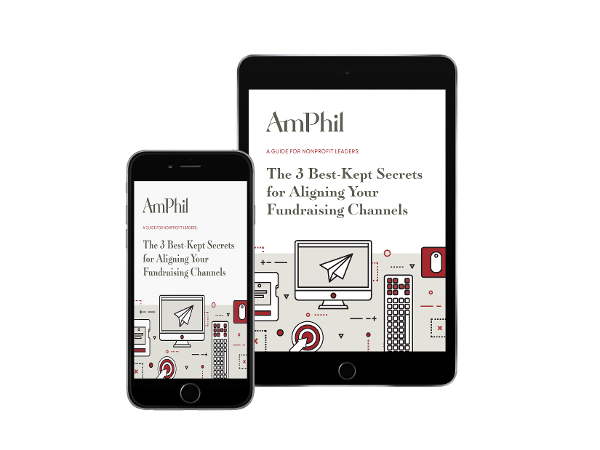
It’s human nature to look for the most effective solution for the least amount of work. Just ask my diet. Nonprofit development is the same. But no matter how relentless the toil seems, fundraising requires a steady, constant hand at the crank to make progress.
At AmPhil we preach that there is no silver bullet in fundraising. No special sauce. No magic formula. If you’ve interacted with AmPhil, I’m sure you’ve heard my colleagues say, “Development is about doing the small things well and consistently over time.” It’s absolutely true. But too often we jump to action, neglecting preparation.
Building a strong foundation in your organization's systems is crucial because fundraising is more than making the ask; it's about creating new relationships with potential donors and cultivating relationships with your current supporters. To that end, here are 5 essential things every successful nonprofit database should do:
1. Capture Holistic Records of Donors and Prospects
As a nonprofit organization, you have to know who your donors are. No excuses. And a donor’s information is more than what appeared on the check they wrote you. If you are going to think of your donors as people rather than ATM machines, you have to treat their information accordingly.
You want to have a holistic record of your donor: every donation she’s made and to what program, all available contact and biographical information, what projects/needs you will approach her with, and your past connection/interaction with her.
Think of these records as a dossier on each donor that you can reference for every facet of the relationship. Don’t keep it all in your head. When it’s all in your head it’s useless to everyone but you—and if all your donors are in your head, is it really useful to you either? Likewise, you should track prospects in this same way. Don’t wait until someone gives to begin getting to know them and their giving proclivities.
2. Help You Communicate With Your Donors
With a good database, it is ridiculously easy to send acknowledgments of gifts and newsletters, update letters, or solicitations. You can quickly export all your recent donations and merge them into a stock thank you letter. What’s more – you can note these interactions within the database itself so you’ll know exactly where you stand with each of your supporters.
3. Organize Your Fundraising Efforts
Tasks and next steps should also live in your database so that when you sit down with any of your staff, you’re all on the same page and can see exactly what everyone is focusing their efforts on. Connect these tasks to donors or particular giving campaigns to get the bigger picture and coordinate efforts. No more flailing around at meetings!
4. Assign Relationship Managers
A job unassigned is a job undone. The same is true for donors. Donors unmanaged are uncultivated donors. Every organization manages relationships with its donors. Some do it poorly, neglect to communicate, or only approach donors with hat in hand. Use your database to actually assign your top donors to a particular development staff member that becomes their “Relationship Manager” and hold them accountable for cultivating that donor. Assign relationship managers to at least the top 25% of your donors and work to expand that number depending on the capacity of your organization. You’ll be surprised how engaged your donors will be when you engage with them.
5. Emphasize the Importance of Data
One of the most effective uses of a database is to align your organization’s thinking around the records and data you utilize on a daily basis. The database is not additional but central. Relationship management is not superfluous but essential. A central repository for your donors, donations, tasks, and events is not a luxury but a necessity. And conscripting Excel or Google Sheets into a task, they are fundamentally incapable of delivering is detrimental to your organization’s development potential and mission advancement.
At the end of the day, fundraising is straightforward: Bring new donors into the life of your organization, and retain and cultivate the donors you have.


